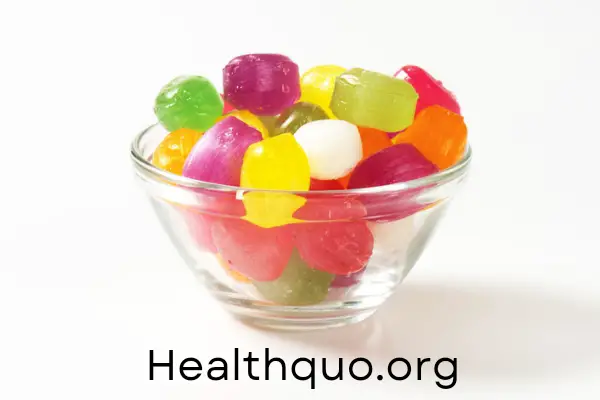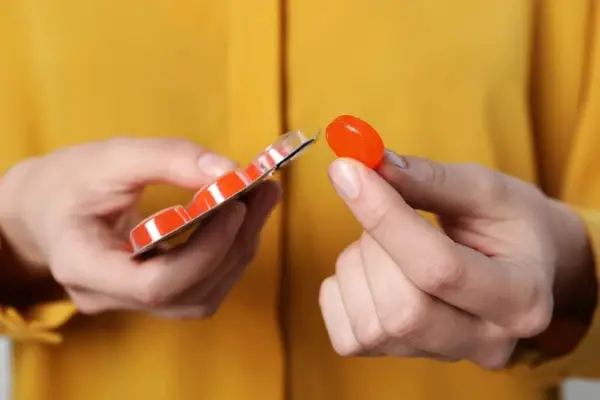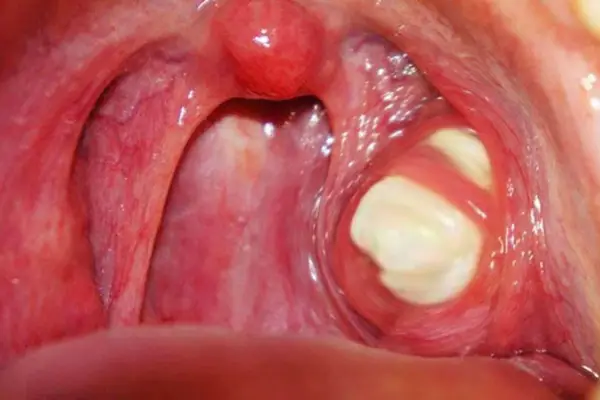Every adult has probably swallowed hard candy at some point in their life and this often leads to a moment of concern since hard candies are designed to be sucked on and not swallowed or chewed.
The good news is that candies, unlike other foreign objects, can be easily dissolved in the gastrointestinal tract and absorbed. It is unable to withstand the high levels of moisture and intense enzymatic activities in the stomach and intestines.
However, choking risk still exists especially in children or people with dysphagia and it is evident by coughing and, the inability to breathe or speak. There are also reports of gastrointestinal discomfort and nausea.
Composition of Hard Candies
Hard candies are primarily made of sugar, corn syrup, and flavorings. The sugar and corn syrup are cooked to a high temperature until they reach the “hard crack” stage, which gives the candy its hard texture.
Flavorings and colorings are added to create the various types of candies available.
Some hard candies may also contain small amounts of acids like citric acid to add a sour taste, and others might include essential oils or extracts for flavor.
What Does It Feel Like?
When you accidentally swallow hard candy, the experience can vary widely depending on the size of the candy and individual factors like the size of one’s throat, sensitivity, and reflexes.
The first sensation is often surprise or shock, especially if the swallowing was unintentional. This can quickly turn into discomfort or pain if the candy is large enough to stretch the throat uncomfortably as it begins its journey down.
If the candy is relatively large, there may be a sensation of obstruction or a feeling that something is stuck in your throat. The peristaltic movement of the esophagus will try to push the candy down but sometimes the feeling of obstruction can last longer than usual causing panic.
Once the candy moves past the initial part of the throat and begins its descent down the esophagus, the sensation of obstruction will typically diminish. However, you might still feel an unusual sensation or pressure as it continues to travel down.
What Happens If You Swallow A Hard Candy?
When you swallow a hard candy, the usual outcome is that it travels down the esophagus to the stomach, where it gradually dissolves due to the digestive processes involving gastric acids and enzymes. This process is facilitated by peristalsis, a series of wave-like muscle contractions that propel the candy along the digestive tract.
If the candy “goes down the wrong pipe,” technically entering the trachea (windpipe) instead of the esophagus, it can lead to choking. This is a serious situation because it can block the airway, making it difficult or impossible to breathe. The body’s natural response to choking includes coughing or gagging to try to expel the object.
Although less common, there is a risk of gastrointestinal upset or discomfort. Large pieces of candy might irritate the lining of the esophagus or stomach, potentially leading to nausea or vomiting.
Children are particularly at risk for choking on hard candies due to their smaller airways and less-developed swallowing abilities. It’s crucial for caregivers to supervise children when they are eating candies and to encourage them to chew thoroughly before swallowing.
Candy Stuck In The Throat. What Should You Do?
When a candy gets stuck in the throat, it could either be lodged in the esophagus (the tube that carries food from the mouth to the stomach) or the trachea (windpipe, which carries air to the lungs). Both scenarios can be uncomfortable and potentially dangerous, but the approaches to handling them differ.
Candy Stuck in the Esophagus
When candy is stuck in the esophagus, the individual might feel discomfort or pain in the chest or throat, have difficulty swallowing, or feel like something is stuck in the throat. However, they will typically still be able to breathe.
What to Do:
Encourage Swallowing: Try to swallow saliva or take small sips of water to help move the candy down. Do not force large amounts of liquid, as this could cause further discomfort.
Eat Something Soft: Eating a small piece of soft food, like bread, can sometimes help push the candy down.
Stay Calm: Remaining calm can help relax the esophagus, making it easier for the obstruction to pass.
Seek Medical Attention: If the candy does not dislodge, or if pain and discomfort persist, seek medical attention. A healthcare provider can remove the candy using endoscopic techniques.
Candy Stuck in the Trachea
A candy lodged in the trachea can cause immediate coughing, choking, inability to speak or breathe, and a high-pitched sound when breathing (stridor).
What to Do:
Encourage Coughing: If the person can cough or breathe, encourage them to cough vigorously to try to expel the candy.
Back Blows and Heimlich Maneuver: Depending on the age of the individual (as previously described), use back blows for infants or the Heimlich maneuver for children over one year old and adults to try to dislodge the candy.
Call for Emergency Help: If the individual cannot breathe, speak, cough, or have lost consciousness, call emergency services immediately. Time is critical in ensuring the airway is cleared to prevent suffocation.
When to Seek Medical Attention
Seeking medical attention for swallowing hard candy is necessary under certain circumstances to prevent complications or address any arising issues. Here are specific situations when it’s crucial to seek medical help:
Choking or Breathing Difficulty: If the individual is choking or showing signs of breathing difficulty, such as wheezing, coughing persistently, or inability to speak or breathe, seek emergency medical attention immediately. Choking can be a life-threatening situation.
Persistent Pain or Discomfort: If there is ongoing pain or discomfort in the throat, chest, or abdomen after swallowing hard candy, it could indicate that the candy is causing irritation or blockage in the digestive tract.
Signs of Infection or Complication: Fever, persistent sore throat, or signs of infection following the incident may indicate a complication related to swallowing the candy and warrants a medical evaluation.
Difficulty Swallowing or Speaking: If difficulties with swallowing or speaking persist after the initial incident, it could be a sign that the candy caused damage to the throat or esophagus.
For Young Children and Vulnerable Individuals: Children, especially those under the age of three, and individuals with pre-existing conditions affecting the esophagus or digestive tract, may be more prone to complications from swallowing objects and should be closely monitored. Seek medical advice even if the symptoms seem mild.
Preventive Measures
Preventing accidental hard candy swallowing, especially in children, involves taking specific measures to reduce the risk of choking and other related incidents. Here are targeted preventive strategies:
Age Consideration: Avoid giving hard candies to children under the age of 4, as they are at a higher risk of choking due to their smaller airways and less developed swallowing abilities.
Supervision: Closely supervise older children while they are eating candies or any small, hard foods. Ensure they are sitting down and not running, playing, or lying down while eating, to minimize the risk of choking.
Store safely: Keep hard candies out of reach of children and store them in childproof containers or high cabinets.
Educate about dangers: Explain the risks associated with swallowing hard candies and the importance of being cautious.
Emergency preparedness: Familiarize yourself with basic first aid techniques like the back blows or Heimlich maneuver in case of emergencies.





